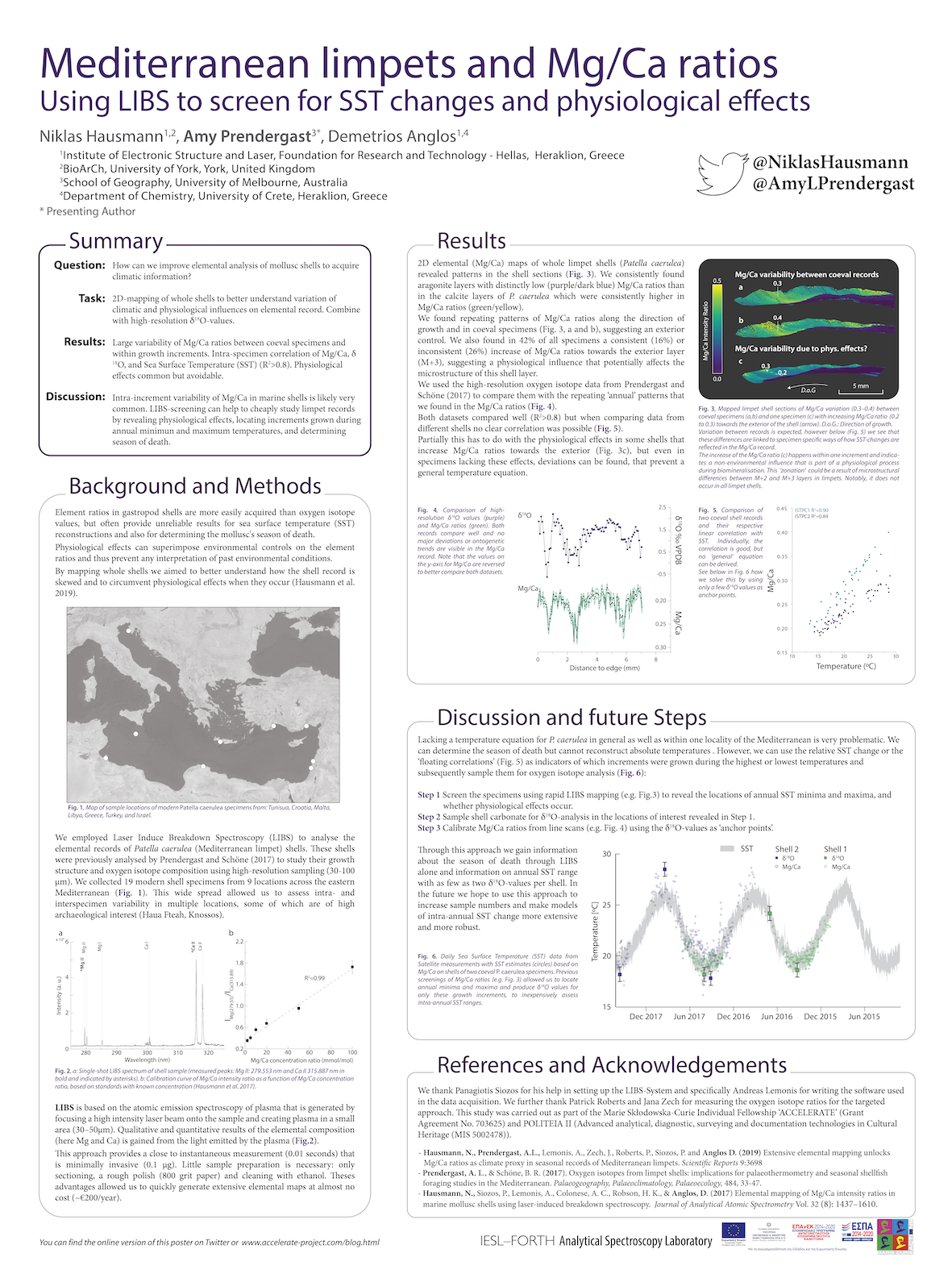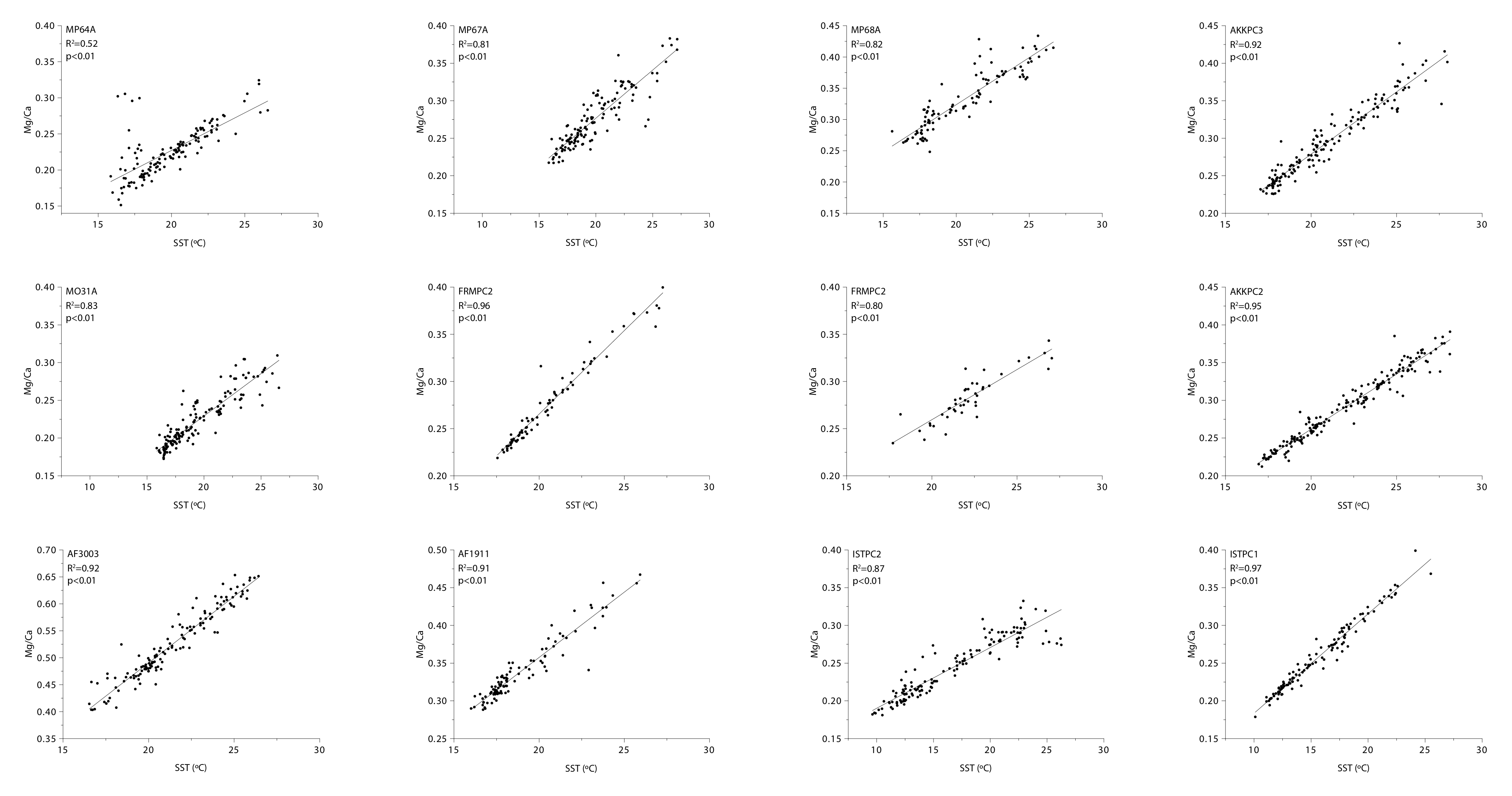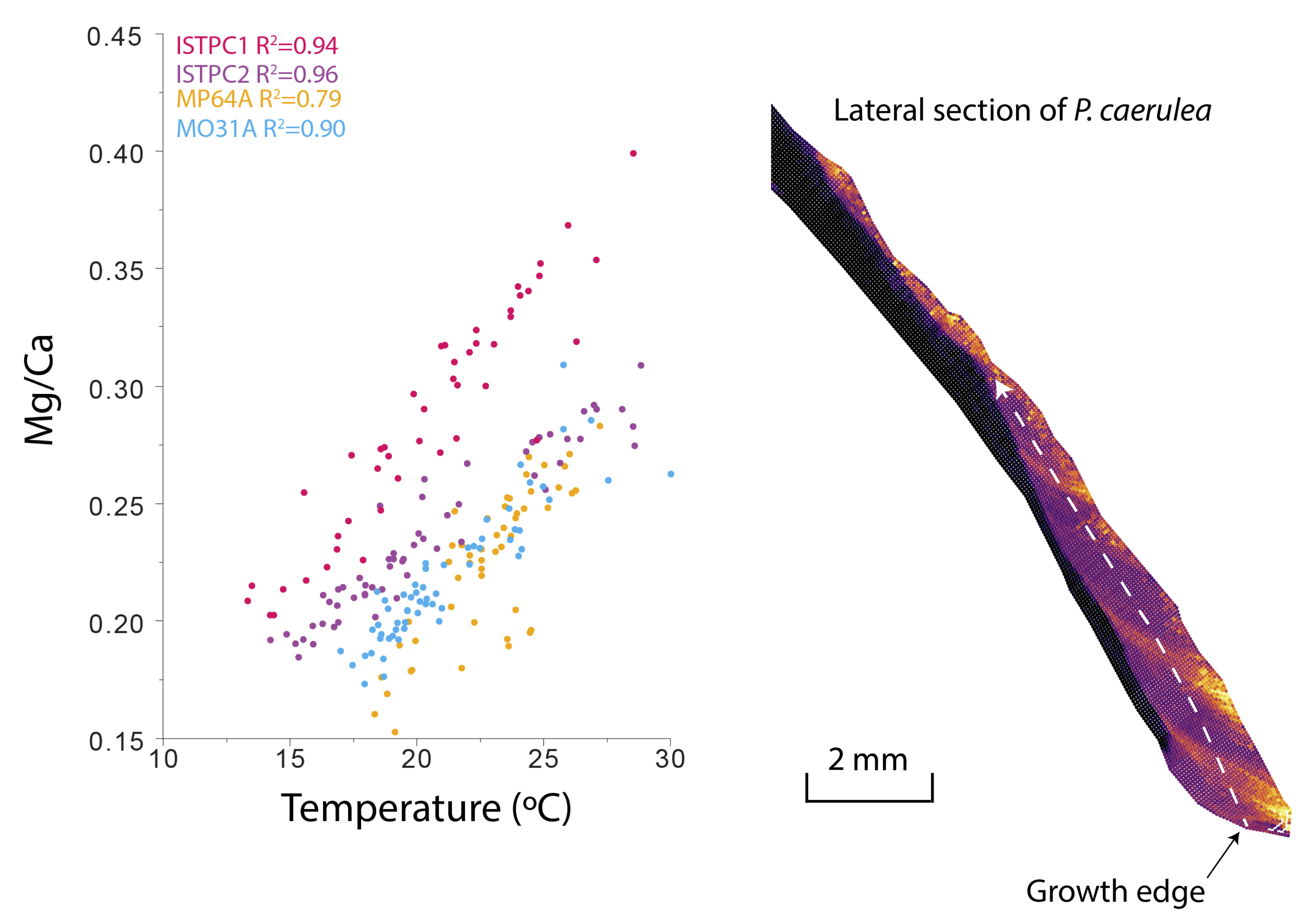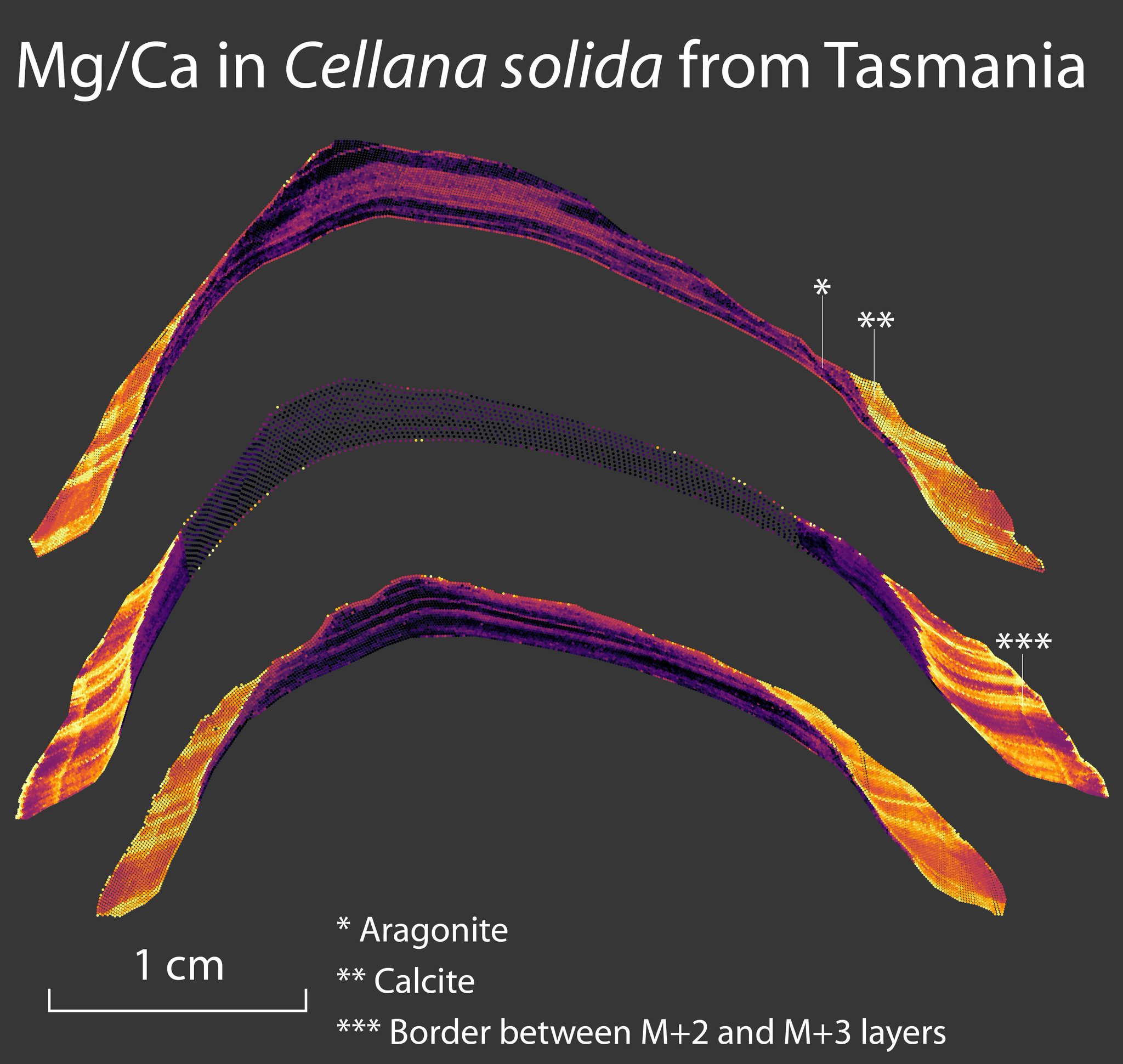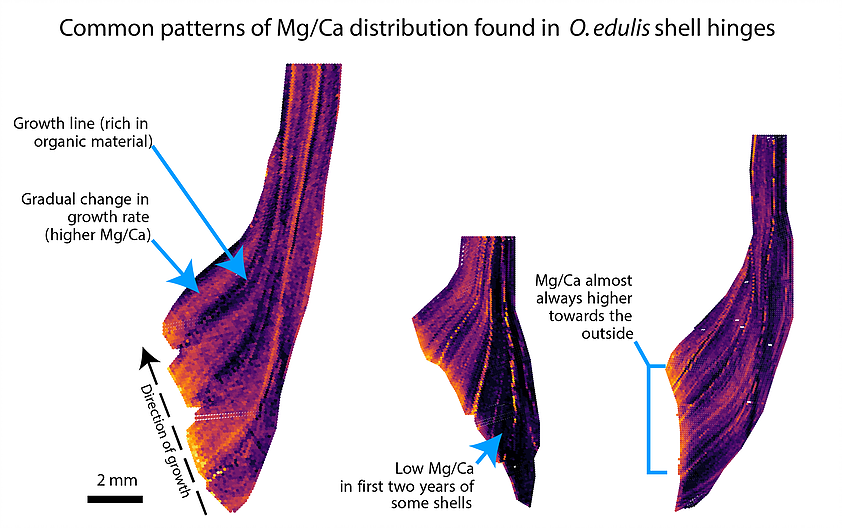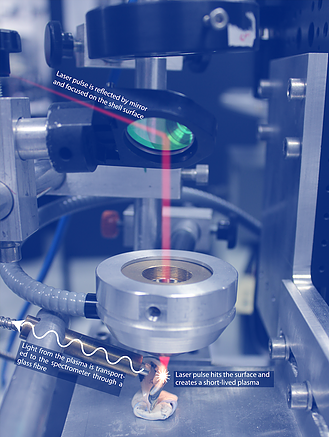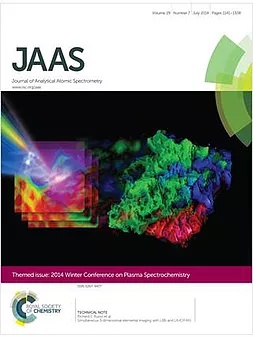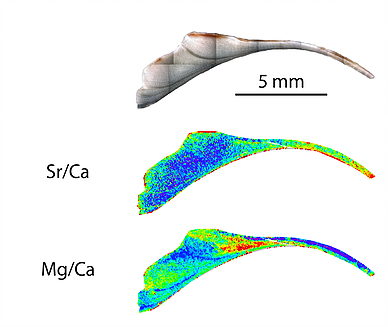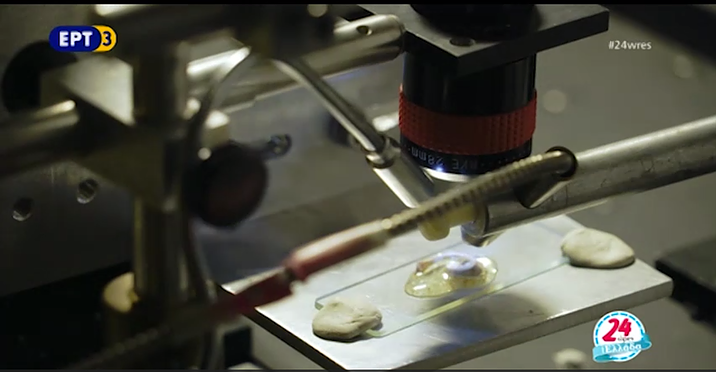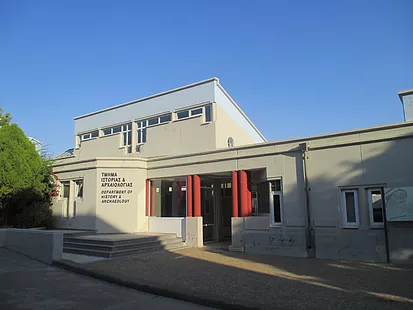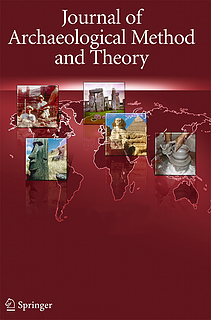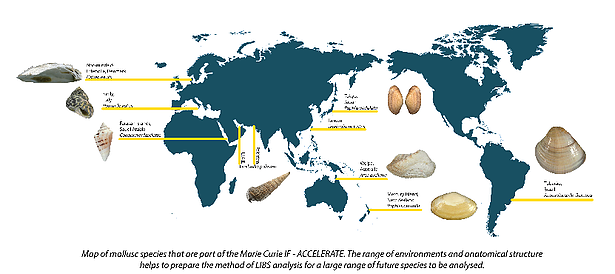In the examples here, I chose to measure the intensities of emission lines which correspond to ions of the elements Mg and Ca. The ratios calculated reflect the intensities of specific emission lines and do not directly translate into ratios based on weight or molar ratios, although the relationship is somewhat linear. Hence the ?intensity-ratios? here are reported in arbitrary units (a.u.).
The setup?s acquisition process was programmed using LabView software (www.ni.com/labview/) and is divided into two phases (indicated by red and blue arrows in Fig. 1). In the first phase (red), multiple target locations or waypoints are being selected by moving the sample stage to the preferred location, which is visible through the camera. The sample locations are then interpolated between the two (or more) waypoints at a given interval (here 100�m) and put down in a list.
In the second phase, the motorised stage goes through the list of pre-selected sample locations, while acquiring LIBS spectra at each location with an irradiation area of ~90�m in diameter. In each spectrum the mean ratio of the intensity of the two pre selected peaks is calculated and then assigned to the corresponding sample location in the list.
There are two modes that can be chosen from for the second phase of acquisition. The first mode (accumulation) calculates the ratio of selected peaks in a single ?accumulated? spectrum which is an accumulation of several spectra (here 10) in one location. The second mode (single shot) calculates the ratio of selected peaks in each of the 10 spectra separately. While the resulting mean ratio is identical, the two modes have different advantages. The accumulation mode has a faster performance because only one spectrum needs to be analysed, whereas the single shot mode allows the user to assess the standard deviation of the 10 spectra to provide an error for the mean value. As such, the accumulation mode is more suitable for spatially mapping elemental ratios and the single shot mode is more suitable for tracking changes along the direction of growth and thus through time. The typical time spend in one sample location is about 1.7 seconds in accumulation mode and 2.4 seconds in single shot mode. With this configuration a typical analysis of 5 cm translates into 500 sample locations (5,000 spectra) and would required a time of acquisition of about 14 minutes (20 min in single shot mode).
Experiments
For the experiment, I used three samples. In all three cases the shell had previously been sectioned along the direction of growth and thus provided a flat surface for me to analyse.
The sections were analysed in both modes (Fig. 2). First, I created a map of the elemental ratios by using the accumulation mode. This allowed me to get a good idea of larger trends in the elemental composition of the shell and to identify patterns that are likely not related to environmental change. Only afterwards I selected an area of interest (black lines) that was analysed in the more detailed single shot mode following the direction of growth.
All three shells produced Mg/Ca intensity ratios that described somewhat cyclical patterns, as is expected when analysing records on a seasonal scale. However, all specimens also had isochronous parts within the same growth increments where the values would deviate from the general cyclical trend, indicating that other factors control the elemental ratio as well (Marali et al., in press).
In C. fasciatus, the single shot mode shows high values at a 0?2 mm distance to the shell edge, with a short decrease at 0.3 mm, before a larger decrease from 0.09 Mg/Ca to 0.04 Mg/Ca at 3.0 mm. Afterwards, there is an increase to above 0.10 Mg/Ca over the next 4 mm. Despite this being the general trend within the sample, the map of ratios shows quite clearly that some parts outside the sampling path of the linear measurement (black line) deviate from those values. Similar spatial trends were found by Poulain et al. (2015) in Ruditapes philippinarum and indicate a non-environmental influence.
The O. edulis sample shows similar results. Measuring along the direction of growth in single shot mode, a repetitive pattern is apparent with peaks at at ~0.17 Mg/Ca and lows at ~0.11 Mg/Ca. However, the map shows areas in the top right that generally produce higher values than areas in the bottom left, even though the areas cover increments that grew at the same time. This could be explained with the averaging of growth increments in the bottom left of the map, that are too thin to be sampled individually. Potentially high values could be mixed together with other thin growth increments that produce lower values (Shirai et al., 2014). However, this effect would also prevent extremely low values, which were still reached.
Variations of Mg/Ca values outside the linear sampling path were also found in A. flexuosa. The mapped ratios separate the shell section into three parallel growing layers (interior, centre, and exterior). Albeit growing at the same time, they almost consistently produce different Mg/Ca values, with the central one having higher values than the others. Similar ?zonation? was found by Lazareth et al. (2013) in Protothaca thaca and Freitas et al. (2009) in Mytilus edulis as well as Pecten maximus, who suggest sampling P. maximus within the mid-regions of the shells for more consistent environmental proxy data.
The reason behind the spatial patterns in isochronous parts of the shells analysed above requires more thorough analyses, before they can be used as seasonal or environmental proxy. Although there are cyclical variations that could well be controlled directly or indirectly by seasonal environmental change, it will be necessary to clearly link element/Ca ratios to specific changes. Otherwise it will be difficult to apply the same seasonal control to archaeological specimens and make consistent interpretations of the archaeological dataset.
Summary
With these experiments I showed the application of an automated LIBS setup to acquire elemental ratios from in situ shell carbonate. This was realised with the use of a LIBS imaging setup that offered a spatial resolution at a scale of ~100 �m and an acquisition speed of ~20,000 spectra/h. The setup proved the feasibility of efficiently acquiring elemental ratios from shell carbonates using LIBS, which will directly translate into lower costs per data point.
However, I have not yet linked the elemental ratios of the LIBS values to distinct environmental change, although cyclical changes were visible that suggest seasonal patterning. A validation based on modern shells and contemporaneous environmental data is still needed to fully make a case for the use of the presented elemental ratios as seasonal proxies.
This will be the next step of the ACCELERATE project. The variability of the elemental ratios in isochronous parts will make this more difficult and it is likely that different solutions need to be found for different shell species and environments. That said, the possibility to quickly assess elemental ratios will be beneficial in carrying out the analyses of more shell specimens in a shorter time frame than previously possible.
References
Freitas, P.S., Clarke, L.J., Kennedy, H., Richardson, C.A., 2009. Ion microprobe assessment of the heterogeneity of Mg/Ca, Sr/Ca and Mn/Ca ratios in Pecten maximus and Mytilus edulis (bivalvia) shell calcite precipitated at constant temperature. Biogeosciences 6, 1209?1227.
Garc�a-Esc�rzaga, A., Moncayo, S., Guti�rrez-Zugasti, I., Gonz�lez-Morales, M.R., Mart�n-Chivelet, J., C�ceres, J.O., 2015. Mg/Ca ratios measured by laser induced breakdown spectroscopy (LIBS): a new approach to decipher environmental conditions. J. Anal. At. Spectrom. 30, 1913?1919.
Graniero, L.E., Surge, D., Gillikin, D.P., Briz i Godino, I., �lvarez, M., 2017. Assessing elemental ratios as a paleotemperature proxy in the calcite shells of patelloid limpets. Palaeogeogr. Palaeoclimatol. Palaeoecol. 465, Part B, 376?385.
Harmon, R.S., Russo, R.E., Hark, R.R., 2013. Applications of laser-induced breakdown spectroscopy for geochemical and environmental analysis: A comprehensive review. Spectrochim. Acta Part B At. Spectrosc. 87, 11?26.
Hausmann, N., Meredith-Williams, M., 2016. Exploring Accumulation Rates of Shell Deposits Through Seasonality Data. J Archaeol Method Theory. doi:10.1007/s10816-016-9287-x
Jew, N.P., Erlandson, J.M., Rick, T.C., Reeder-Myers, L., 2013a. Oxygen isotope analysis of California mussel shells: seasonality and human sedentism at an 8,200-year-old shell midden on Santa Rosa Island, California. Archaeol. Anthropol. Sci. 6, 3, 293?303 doi:10.1007/s12520-013-0156-1
Jew, N.P., Erlandson, J.M., Watts, J., White, F.J., 2013b. Shellfish, Seasonality, and Stable Isotope Sampling: δ18O Analysis of Mussel Shells From an 8,800-Year-Old Shell Midden on California?s Channel Islands. The Journal of Island and Coastal Archaeology 8, 170?189.
Lazareth, C.E., Le Cornec, F., Candaudap, F., Freydier, R., 2013. Trace element heterogeneity along isochronous growth layers in bivalve shell: Consequences for environmental reconstruction. Palaeogeogr. Palaeoclimatol. Palaeoecol. 373, 39?49.
Marali, S., Sch�ne, B.R., Mertz-Kraus, R., Griffin, S.M., Wanamaker, A.D., Butler, P.G., Holland, H.A., Jochum, K.P., in press. Reproducibility of trace element time-series (Na/Ca, Mg/Ca, Mn/Ca, Sr/Ca, and Ba/Ca) within and between specimens of the bivalve Arctica islandica--A LA-ICP-MS line scan study. Palaeogeogr. Palaeoclimatol. Palaeoecol. doi:10.1016/j.palaeo.2016.11.024
Poulain, C., Gillikin, D.P., Th�bault, J., Munaron, J.M., Bohn, M., Robert, R., Paulet, Y.-M., Lorrain, A., 2015. An evaluation of Mg/Ca, Sr/Ca, and Ba/Ca ratios as environmental proxies in aragonite bivalve shells. Chem. Geol. 396, 42?50.
Shirai, K., Sch�ne, B.R., Miyaji, T., Radermacher, P., Krause, R.A., Jr., Tanabe, K., 2014. Assessment of the mechanism of elemental incorporation into bivalve shells (Arctica islandica) based on elemental distribution at the microstructural scale. Geochim. Cosmochim. Acta 126, 307?320.
Thomas, K.D., 2015. Molluscs emergent, part II: themes and trends in the scientific investigation of molluscs and their shells as past human resources. J. Archaeol. Sci. 56, 159?167.
Thompson, V., Andrus, C., 2011. Evaluating Mobility, Monumentality, and Feasting at the Sapelo Island Shell Ring Complex. Am. Antiq. 76, 315?344.


